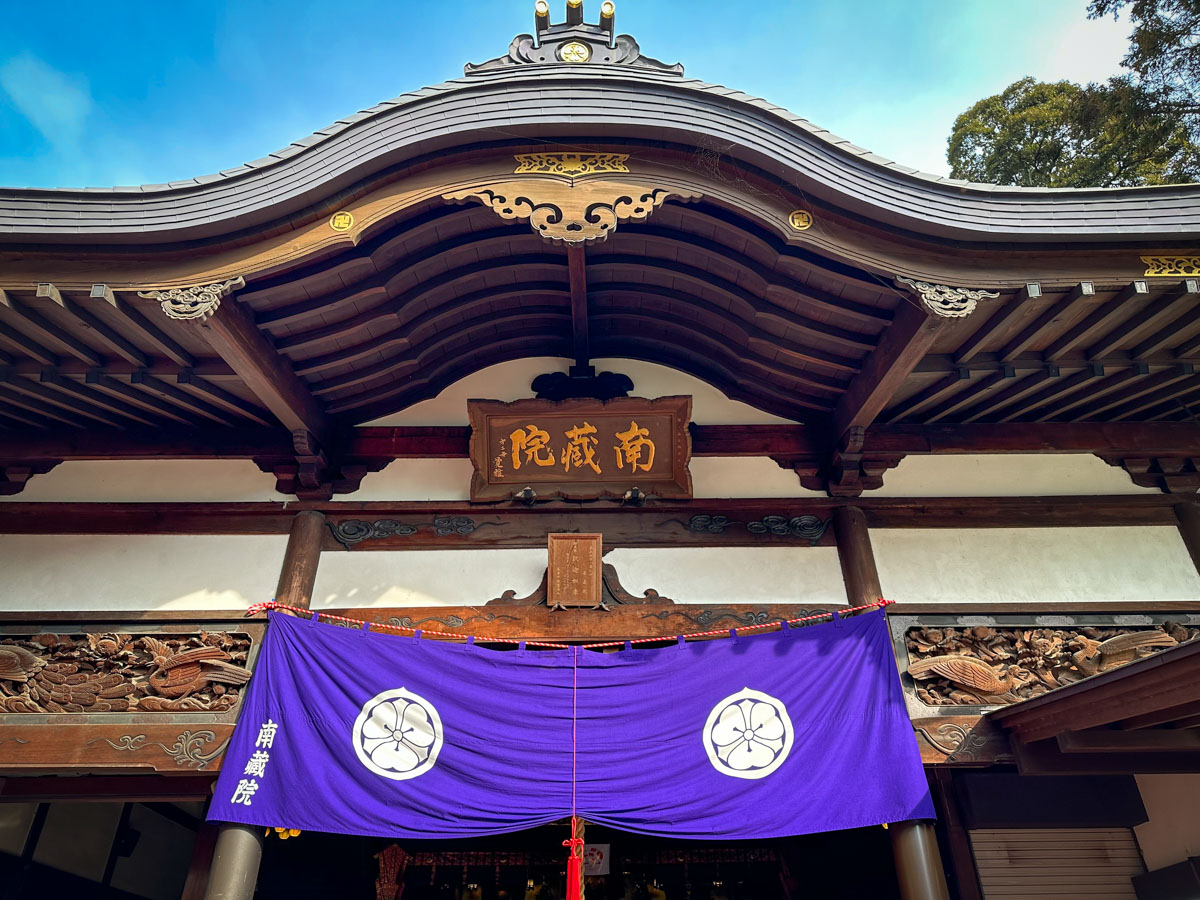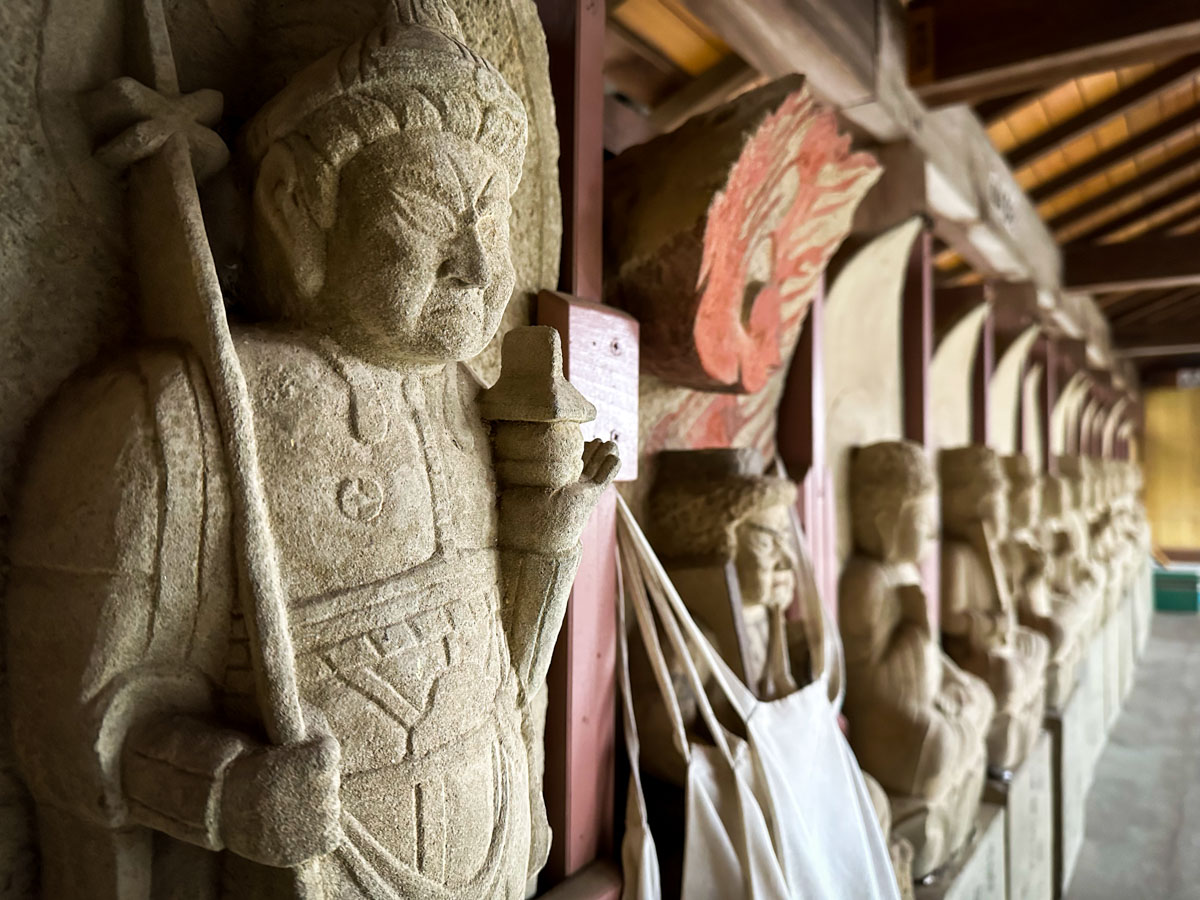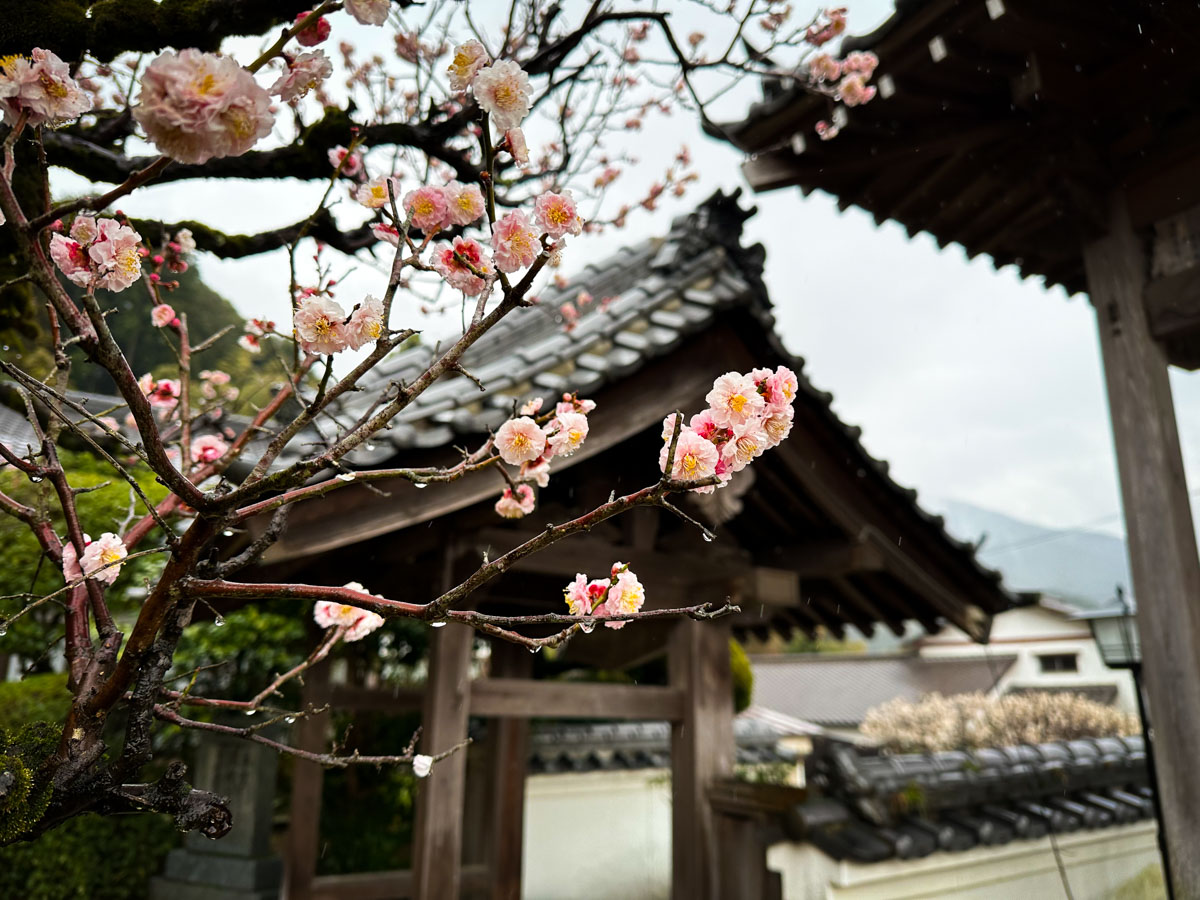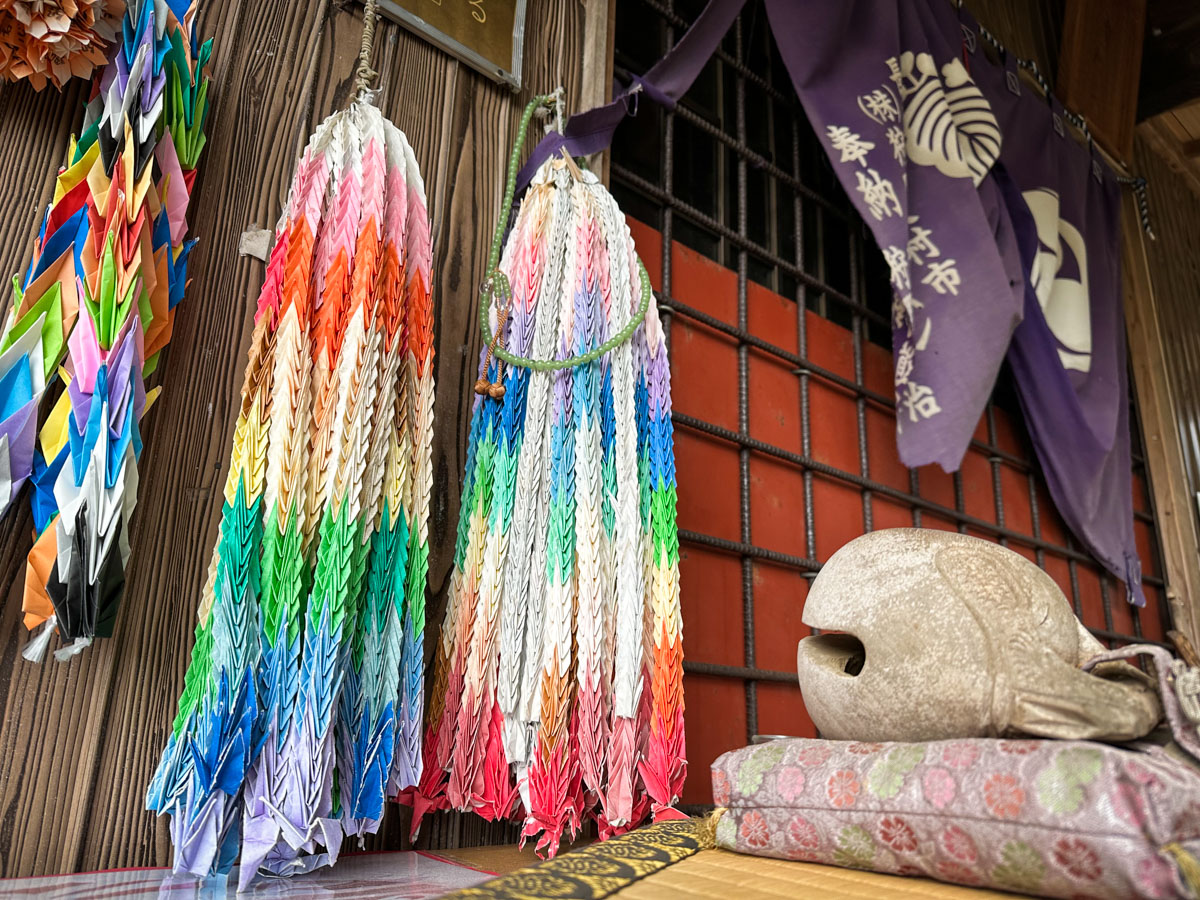Frequently Asked Questions
Do I have to be Buddhist to walk the Sasaguri Pilgrimage?
No, you do not have to be Buddhist to do the Sasaguri Pilgrimage. Like most 88 pilgrimages around Japan, the Sasaguri Pilgrimage is connected to the Shikoku Pilgrimage and tied to legends of (and blessings from) Kukai. But non-Buddhists can also benefit greatly from the experience. As long as you show respect toward the customs and etiquette of temples around Sasaguri Town, most people welcome religious outsiders with curious warmth.
Only a handful of foreigners complete the Sasaguri Pilgrimage every year. If you look foreign, you’ll find that monks and temple staff will be shocked by your participation in the pilgrimage.
Do I have to wear “official” pilgrimage clothes?
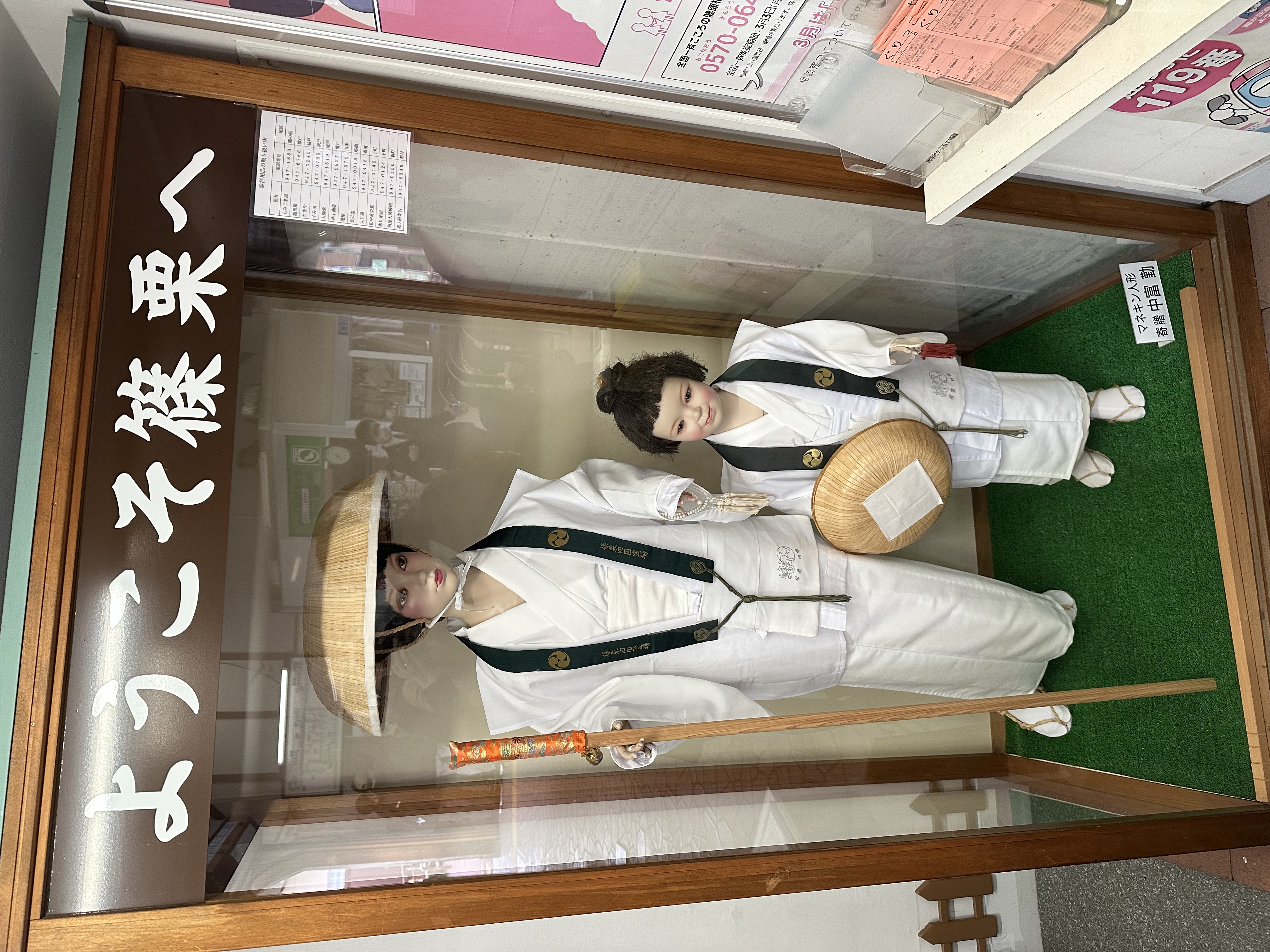 There are no rules which say a pilgrim must wear the traditional hat and clothing of the Sasaguri pilgrimage (which mirror the Shikoku Pilgrimage almost exactly). Many people choose to just wear the white “hakui” vest or carry a pilgrim bag while on the journey. Others choose to wear nothing at all. Using the traditional “tsue,” or walking stick, can be helpful in the mountains.
There are no rules which say a pilgrim must wear the traditional hat and clothing of the Sasaguri pilgrimage (which mirror the Shikoku Pilgrimage almost exactly). Many people choose to just wear the white “hakui” vest or carry a pilgrim bag while on the journey. Others choose to wear nothing at all. Using the traditional “tsue,” or walking stick, can be helpful in the mountains.
While wearing traditional garb can add to the immersion of the pilgrimage, it will call attention to yourself (especially if you do not look Japanese). In many cases, this attention can be a good thing – it will encourage curious locals and temple staff to engage with you, and can lead to wonderful conversations.
What happens at the end of my Sasaguri 88 Pilgrimage?
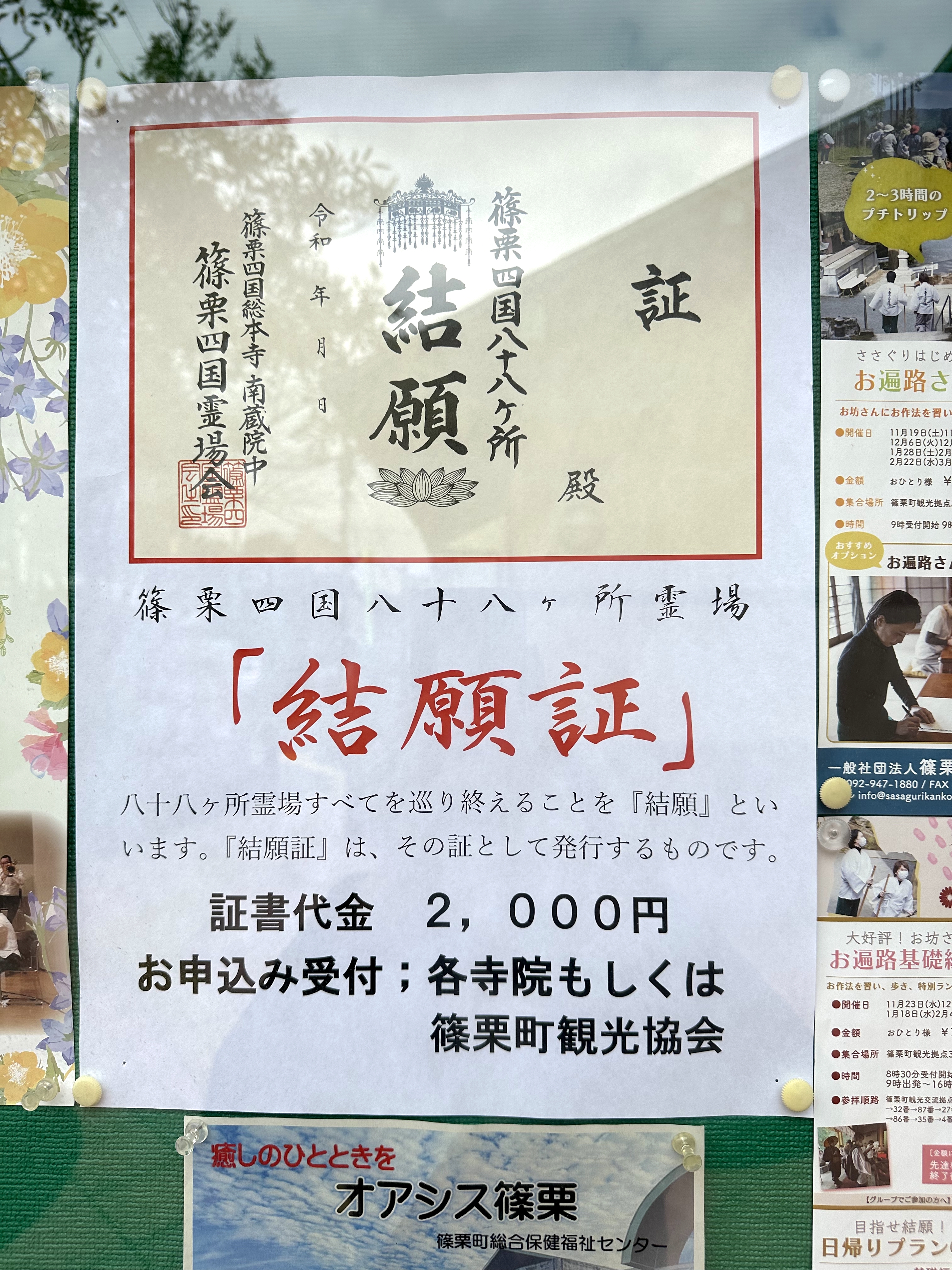 Temple #79 (“Fudarakuji”, 補陀洛寺) is usually the final stop along most pilgrims’ journey. At this temple, the office staff are able to review a stamp book to certify that a pilgrim has visited all 88 temples, and can issue a completion certificate (“kechigan-shō”, 結願証) for ¥2,000 JPY. Temple staff will ask for your name and address, and will mail the certificate to you at a later date (it is currently unknown whether overseas addresses are acceptable).
Temple #79 (“Fudarakuji”, 補陀洛寺) is usually the final stop along most pilgrims’ journey. At this temple, the office staff are able to review a stamp book to certify that a pilgrim has visited all 88 temples, and can issue a completion certificate (“kechigan-shō”, 結願証) for ¥2,000 JPY. Temple staff will ask for your name and address, and will mail the certificate to you at a later date (it is currently unknown whether overseas addresses are acceptable).
Some pilgrims choose to complete the journey more than once... especially those who enjoy Sasaguri as a day trip from Fukuoka city. Like most pilgrimages in Japan, there are different symbolic indications, from the stamps you receive to the clothes one wears. These indicate the number of times a pilgrim has complete the journey.
